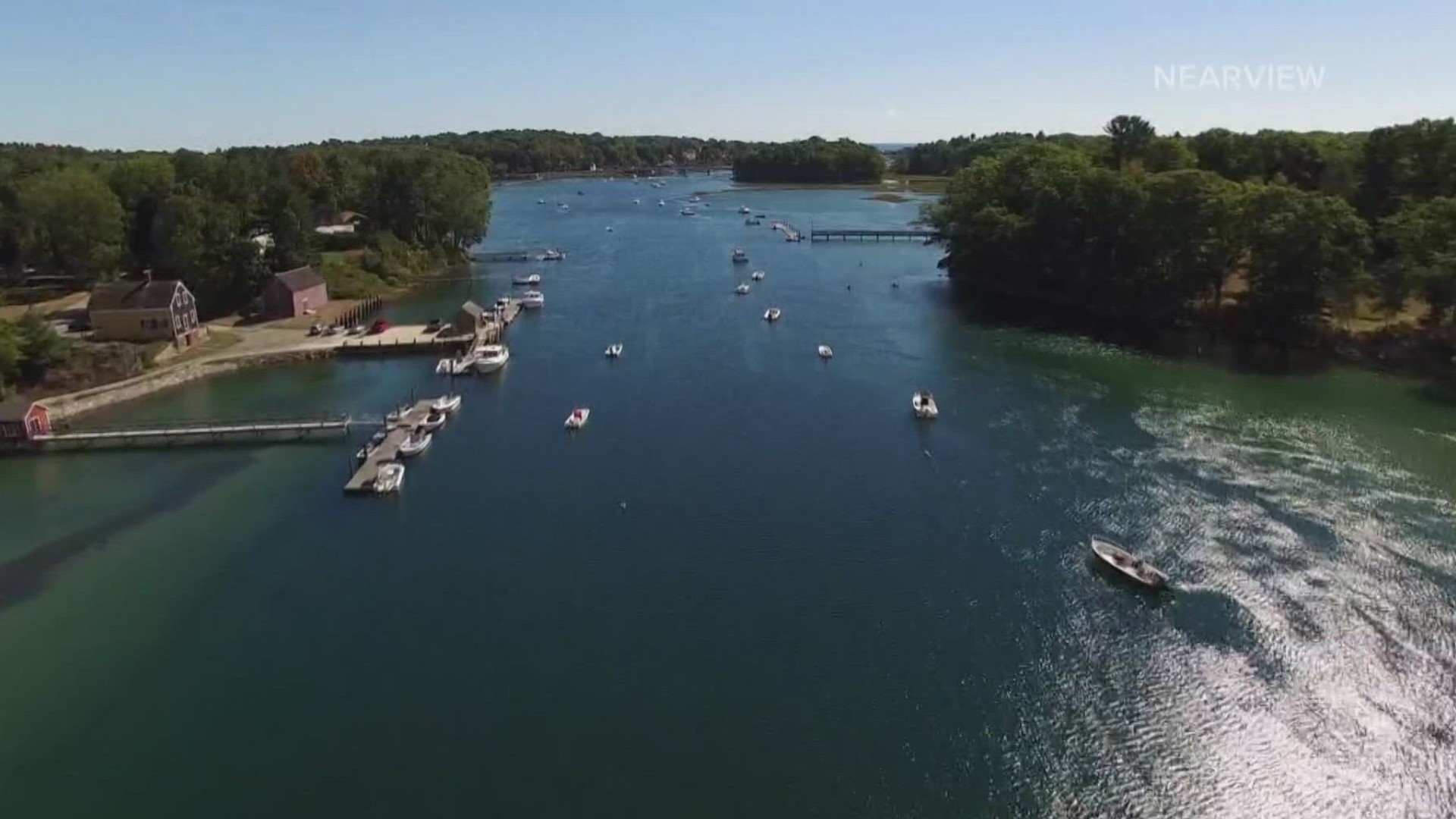MAINE, USA —
The fight against climate change never stops in Maine, especially when it comes to the Pine Tree State’s waterways that are being polluted by increased storm runoff.
Levels have been running high the last few years, according to the Maine Department of Environmental Protection. Levels are so high that the Kennebunk River has been formally classified as impaired for bacteria by Maine’s DEP.
This is where Grist Mill Pond and the Kennebunk River meet.
"There’s a lot of development in this area which then increases impervious surface area through pavement which enhances polluted runoff into our waterways," Alex Brown, a conservation technician with York County Soil and Water Conservation District, said.
Brown said buffer planting and fortification along the riverbank is needed to reduce impacts from pollution. But that’s not all it does.
"Another portion of this project is helping manage the nutrient levels that are running off from agriculture," Brown added.
Brown is leading the Kennebunk River Watershed restoration project. The goal is to protect water quality by enhancing a vegetative buffer at Cape Arundel Golf Club.
"Lately with the vegetation, we’ve seen some erosion going on and we’re trying to put forth a good program going forward and trying to wrap these banks with rock," Ryan Emerich said.
Ryan Emerich is the golf course superintendent at Cape Arundel Golf Club. He said there were more than 40 inches of rain over the summer and that led to some erosion.
Brown said more storms mean more storm runoff.
Heavy rain or snowmelt carries pollutants, but it’s the root systems in the buffer that absorb and slow down water flow. Brown said this allows the pollutants to go into the ground, not the waterway.
"If we’re having higher frequency storms, it’s really important then to enhance your vegetative buffer," Brown said.
But the climate change fight isn't just about action; it’s about education, too.
"This area here, it does serve a purpose for a vegetative buffer, but it’s also serving an educational purpose, too, for golfers that came out here today to help educate the public how to manage their waterfront properties," Brown said.
For Phase 1 of the restoration project, everything planted was native to Maine.
There is hope for a Phase 2 coming soon. In the meantime, Emerich’s best advice for property owners is to ensure enough of a buffer zone at waterways—the higher you can let it grow, the better.
Brown said if anyone needs help or advice on how to install a vegetative buffer, or even manage erosion or runoff on their property you, can contact the York County Soil and Water Conservation District. They do assessment visits for free and will give advice on where to go from there.

